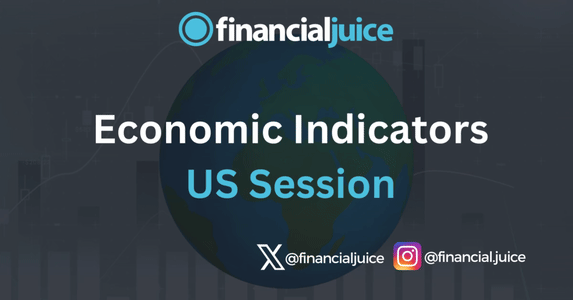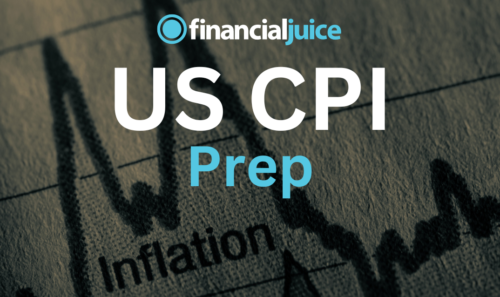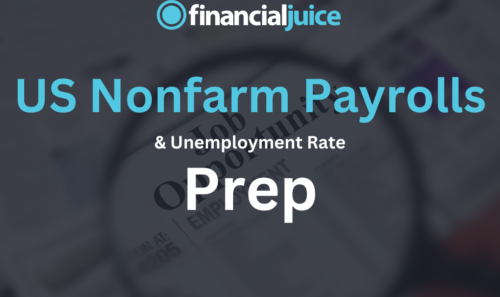
Week Ahead: Economic Indicators (US)
Tuesday
08:30 ET
Canadian CPI
The Canadian Consumer Price Index is a monthly measure released by Statistics Canada that tracks the changes in prices of a fixed basket of goods and services over time.
It reflects inflation at the consumer level, covering categories like food, shelter, transportation, and healthcare.
The CPI is a key indicator used to monitor inflation trends and the cost of living in Canada.
Rising CPI indicates higher inflation, meaning consumers are paying more for goods and services, while a decrease suggests lower inflation or deflation.
The Canadian CPI influences monetary policy decisions by the Bank of Canada.
What to Expect
If Canadian CPI were to come in higher than expect, we would be likely to see strength in CAD and weakness in Canadian stocks, as this would decrease the chances of a cut in the interest rate from the BoC at their next meeting.
If it were to come in lower than expected, we would be likely to see weakness in CAD and strength in Canadian stocks, as it would increase/solidify bets on a BoC rate cut at the next meeting.
Thursday
08:30 ET
Us Retail Sales
US Retail Sales is a monthly economic indicator that measures the total sales of goods and services by retail stores across the United States.
Released by the Census Bureau, it provides insights into consumer spending trends, which is a key driver of the economy since consumer spending makes up about 70% of the US GDP.
An increase in retail sales signals economic growth and consumer confidence, while a decline suggests weakening demand.
The report covers a wide range of sectors, from automobiles to clothing, and is monitored by economists, policymakers, and investors to assess the health of the economy.
What to Expect
If retail sales come in higher than expected, we would be likely to see strength across the US assets (dollar, yields and US stocks), as it shows a resilient consumer in the face of tighter monetary conditions, which increases the likelihood of a soft landing for the US economy as we come out of the tightening cycle.
If it comes out weaker than expected however, we would be likely to see weakness across US assets.
Especially when combined with the weak prior employment situation report, this could exacerbate fears of a recession in the US.
09:15 ET
US Industrial Production
US Industrial Production is a monthly economic indicator released by the Federal Reserve that measures the output of the nation’s industrial sectors, including manufacturing, mining, and utilities.
It tracks changes in the volume of goods produced by factories, mines, and power plants, providing insights into the strength of the industrial sector.
Growth in industrial production signals economic expansion, while a decline may indicate a slowdown.
This indicator is closely monitored by policymakers, economists, and investors to assess the overall health of the economy and predict future economic activity.
What to Expect
Industrial Production is unlikely to cause a market reaction, based off of historical releases over the past year.
Having said that, an increase in Industrial Production would indicate an increase in demand for manufactured goods, which translates to a picture of a resilient consumer, which could reduce recession fears and cause strength across US assets.
If it were to come in lower than expected, the opposite could be true, as it could indicate deteriorating demand for manufactured goods, meaning a weaker consumer, and a higher chance of a recession in the US.
10:30 ET
EIA Crude Oil Inventories
The US Weekly EIA Crude Oil Inventories report, released by the Energy Information Administration every Wednesday, provides data on the current amount of crude oil held in storage across the United States.
This report helps gauge supply and demand dynamics in the oil market and can influence oil prices and market sentiment.
What to Expect
An increase in inventories suggests lower demand or higher supply, creating a potential downside in oil prices, while a decrease indicates higher demand or lower supply, causing a possible strengthening in oil prices.
Friday
08:30 ET
US Housing Starts
US Housing Starts is a monthly economic indicator that tracks the number of new residential construction projects that have begun during a given period.
Released by the Census Bureau and the Department of Housing and Urban Development (HUD), it measures the initiation of construction on new single-family homes, apartments, and multi-family buildings.
Housing starts are an indicator of economic health because they reflect demand in the housing market, consumer confidence, and overall economic conditions.
An increase in housing starts signals growth in the housing sector, while a decrease can indicate a slowdown.
What to Expect
Housing starts are unlikely to cause a market reaction, based on historic releases for the last year.
Having said that, an increase in Housing Starts can point to increased demand for housing from US consumers, which can indicate increased consumer sentiment, which could reduce the chances of a recession in the US.
This could cause strength across the US assets (dollar, yields, & US stocks)
If it were to come out lower than expected, the opposite could be true.





